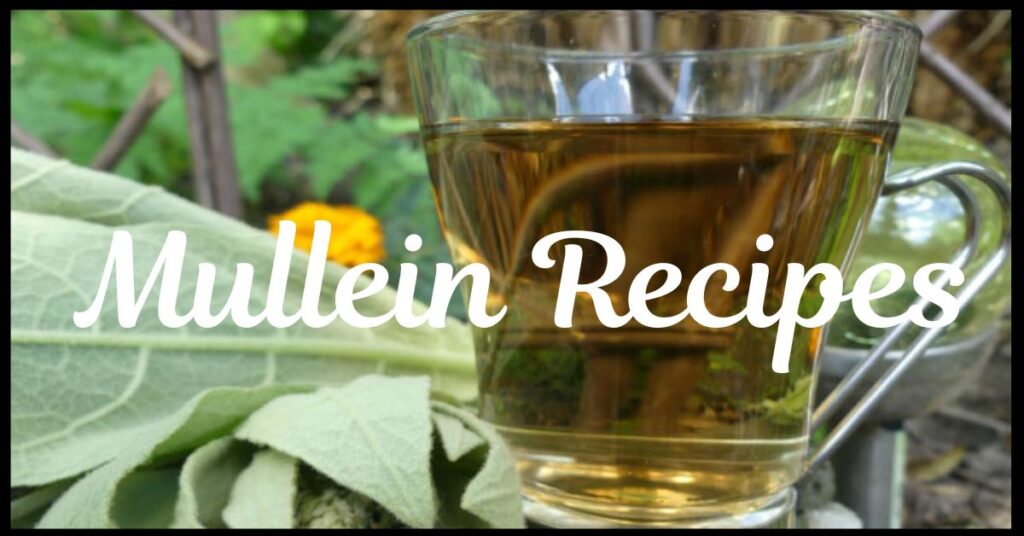Mullein (Verbascum thapsus) is a tall, flowering plant renowned for its soft, woolly leaves and bright yellow flowers. Traditionally used for respiratory health, mullein has found its place not just in herbal remedies but also in various simple, natural recipes. This article explores valuable and safe ways to incorporate mullein into teas, tinctures, oils, and even culinary creations.
Table of Contents
ToggleWhat Is Mullein?
Mullein is a biennial plant native to Europe, Asia, and North Africa but has become widespread across North America. Historically, it has been valued for its soothing properties, especially for respiratory conditions like coughs, bronchitis, and asthma (National Center for Complementary and Integrative Health). The plant’s leaves, flowers, and roots are commonly used in traditional herbal medicine.
Health Benefits of Mullein
Before diving into recipes, it’s helpful to understand why mullein is so popular:
- Respiratory Support: Mullein is known for its expectorant properties, helping to clear mucus from the lungs.
- Anti-inflammatory Effects: Research suggests that mullein may help reduce inflammation (Journal of Ethnopharmacology).
- Antimicrobial Activity: Mullein extracts have demonstrated antimicrobial effects against certain bacteria.
While these benefits are promising, it is important to consult a healthcare provider before using mullein for medicinal purposes.

Popular Mullein Recipes
Mullein is easy to use in various recipes at home. Here are some of the most effective and safe ways to prepare it.
1. Mullein Tea Recipe
Mullein tea is the most traditional and simple way to consume the herb.
Ingredients:
- 1 to 2 teaspoons dried mullein leaves or flowers
- 1 cup boiling water
- Optional: honey or lemon for taste
Instructions:
- Place the dried mullein in a tea infuser or directly into a teacup.
- Pour boiling water over the herbs.
- Cover and steep for 10–15 minutes.
- Strain carefully to remove any fine hairs, which may irritate the throat.
- Add honey or lemon if desired.
Tip: Always strain mullein tea through a fine mesh or cheesecloth to prevent throat irritation from the plant’s tiny hairs.
Benefits: Regularly drinking mullein tea may support respiratory health and provide soothing effects during cold seasons.
2. Mullein Oil Recipe
Mullein oil is often used for earaches and skin irritations.
Ingredients:
- 1 cup fresh mullein flowers
- 1 cup olive oil or jojoba oil
- Glass jar with a tight lid
Instructions:
- Gently crush the fresh flowers to release their oils.
- Place them in a clean glass jar.
- Cover completely with olive oil.
- Seal the jar and place it in a sunny window for 2–4 weeks.
- Shake the jar gently every day.
- Strain the oil through cheesecloth into a clean bottle.
Uses: Mullein oil can be applied externally for minor skin irritations or used as a soothing ear oil (always consult a healthcare professional before use).
3. Mullein Tincture Recipe
A tincture is a concentrated herbal extract that can be taken in small doses.
Ingredients:
- 1 part dried mullein leaves
- 4 parts 80-proof alcohol (like vodka)
- Glass jar
Instructions:
- Place the mullein in a jar and pour alcohol over it.
- Seal tightly and store in a cool, dark place for 4–6 weeks.
- Shake occasionally.
- Strain the liquid and transfer it to a dropper bottle.
Dosage: Generally, 1–2 ml of mullein tincture is used up to three times daily, but it’s important to follow professional guidance.
4. Cooking with Mullein
While mullein is more commonly used medicinally, its young leaves can be incorporated into food.
Mullein Leaf Fritters
Ingredients:
- Young mullein leaves
- 1 cup flour
- 1 egg
- 1/2 cup milk
- Pinch of salt
- Oil for frying
Instructions:
- Wash and dry the mullein leaves thoroughly.
- Mix flour, egg, milk, and salt into a batter.
- Heat oil in a frying pan.
- Dip each leaf into the batter and fry until golden brown.
- Serve warm with a dipping sauce.
Note: Only young, tender leaves are edible. Older leaves are too fibrous and can irritate the digestive tract.
How to Harvest and Prepare Mullein
For best results, harvest mullein leaves in early summer when they are soft and vibrant. Flowers can be gathered during full bloom. Always select plants away from roadsides or polluted areas.
Drying Mullein:
- Lay leaves and flowers in a single layer on a clean screen or tray.
- Dry in a well-ventilated, shaded area.
- Store in airtight containers away from light and moisture.
Proper drying ensures that the herb retains its potency and safety.
Safety and Precautions
While mullein is generally considered safe, certain precautions should be observed:
- Allergic Reactions: Rare, but possible. Discontinue use if symptoms appear.
- Pregnancy and Breastfeeding: Safety has not been well established, so it is best avoided unless advised by a healthcare provider.
- Proper Straining: Always strain teas well to avoid throat irritation.
Consultation with a healthcare professional is recommended before starting any herbal regimen, especially for individuals with underlying health conditions or those taking medications.
Conclusion
Mullein is a highly versatile plant that offers numerous traditional benefits. Whether preparing a simple tea, creating a soothing oil, or trying fritters for a culinary twist, there are many ways to enjoy mullein safely. With careful preparation and responsible use, mullein recipes can be a delightful addition to natural wellness routines.
When using herbs, accuracy, safety, and respect for traditional knowledge are key. Always ensure mullein is properly identified and sourced before use, and consult credible sources or professionals when in doubt.







